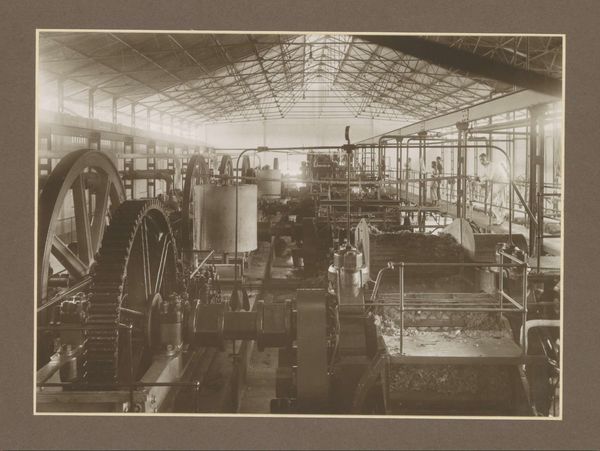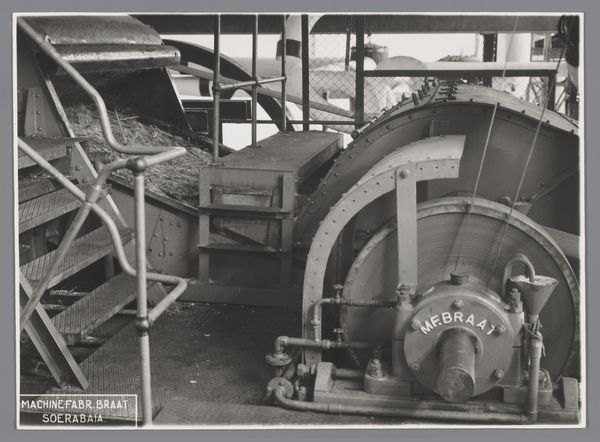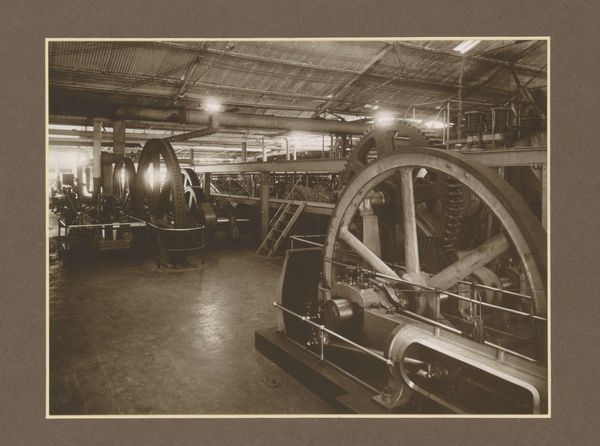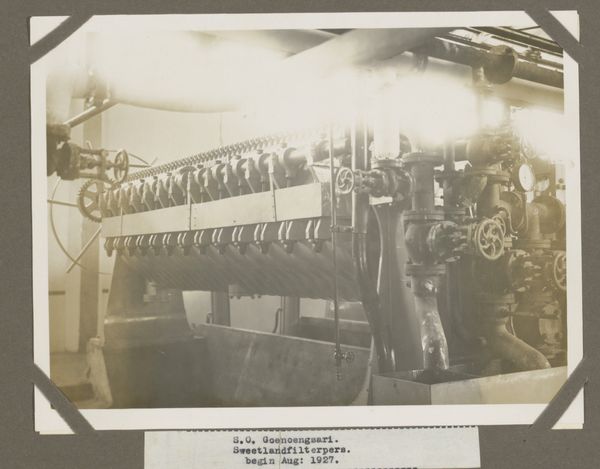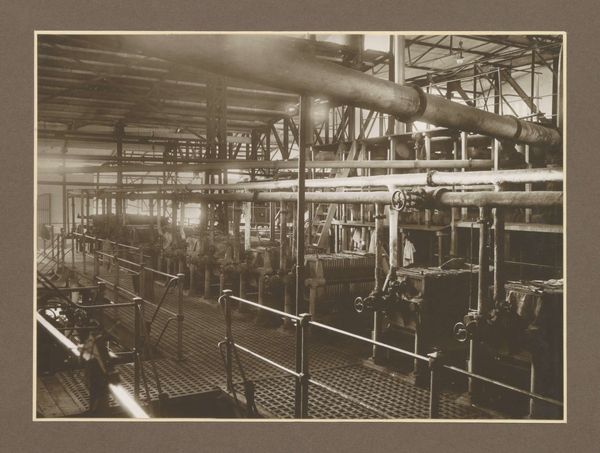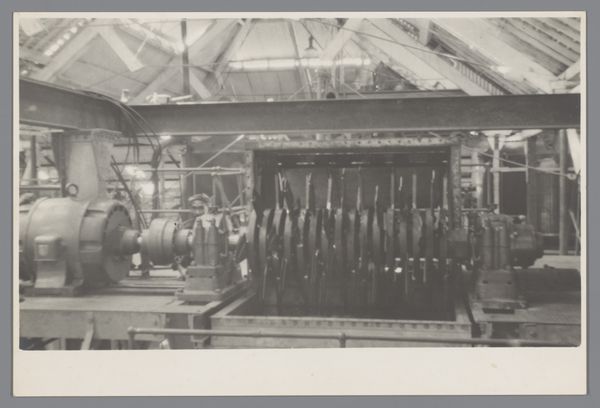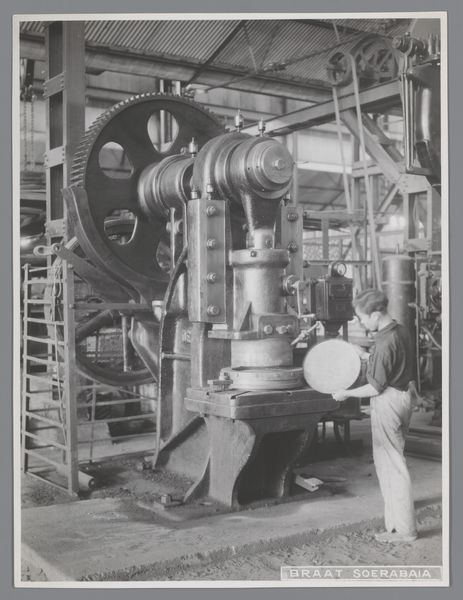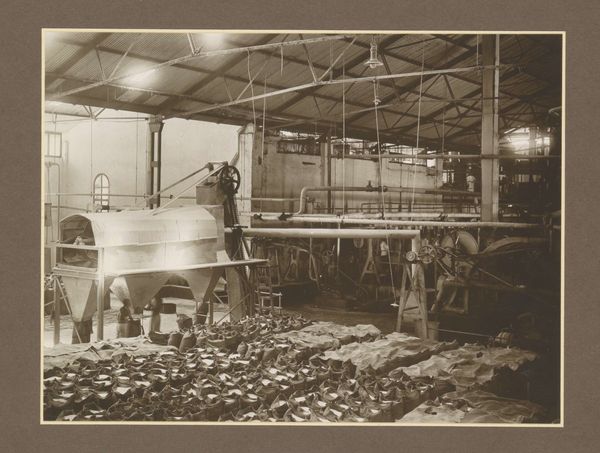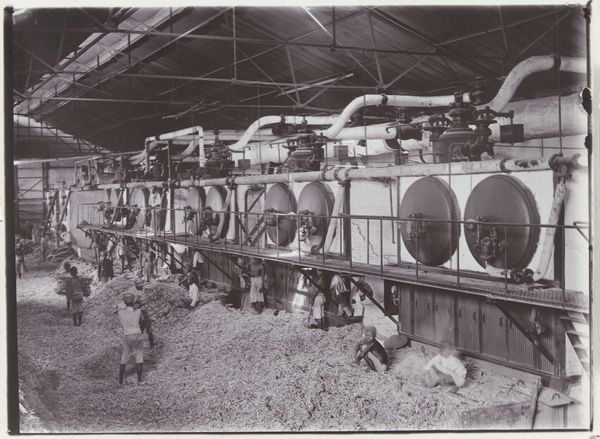
Machines en werknemers in een hal van suikerfabriek Boedoeran in Sidoarjo op Java c. 1925 - 1930
0:00
0:00
print, photography
# print
#
photography
#
historical photography
#
cityscape
#
modernism
Dimensions: height 297 mm, width 450 mm
Copyright: Rijks Museum: Open Domain
Curator: Immediately striking is the mechanical presence, the sheer scale and intricacy of the factory machinery dominating the composition. There's a geometric interplay and a focus on the materiality of these objects that holds one’s attention. Editor: Yes, my immediate response is darker. While the shapes and patterns of industry are visible, I cannot ignore how this aesthetic is directly implicated in colonial labour exploitation, judging from the name of the factory that translates from Dutch as 'Machines and Workers in a Hall of the Boedoeran Sugar Factory'. Curator: Precisely, the geometry lends itself to modernism. This vintage photograph, believed to have been captured circa 1925-1930 by the photographer Isken, presents a cityscape…or rather, a factory-scape with impressive command of the monochromatic palette. Editor: Beyond the purely aesthetic, consider the geopolitical dimensions of it. How does the mechanization and labor of the sugar factory in Java speak to the global flow of capital during the colonial era? We see those themes expressed even through the organization and layering of figures—mechanical parts versus human laborers in this composition. Curator: I understand your concerns, and I do appreciate that you raise them. However, there's still an elegant quality to the rendering of space and light here, regardless of its context. Observe how the light hits those large industrial wheels on the left, contrasting with the shadowy interior. A play of sharp angles against organic shapes in the pile of refined white pulp too. Editor: The bright spots give focus to the areas of labor; the rest becomes a blurred or dim backdrop. Let's remember what “refined” truly meant in those times for people under colonial subjugation. How did sugar refinement create sweetness elsewhere through harsh labor practices on Java? Curator: The visual narrative balances precision with an evocative ambiance. The formalist elements create a scene that’s both industrial and quietly pictorial, speaking to an appreciation of order and mechanical innovation that existed at that time. Editor: Right, a certain visual order masks deeper discord that we are now seeing more clearly. Let this image inspire contemplation on exploitation hidden in plain sight during that colonial era of industry. Curator: A fascinating example of modernist photography that uses sharp lines and subtle contrasts to portray its subject, forcing a discussion about ethics along the way. Editor: It shows the historical echoes still palpable today. Thank you.
Comments
No comments
Be the first to comment and join the conversation on the ultimate creative platform.
